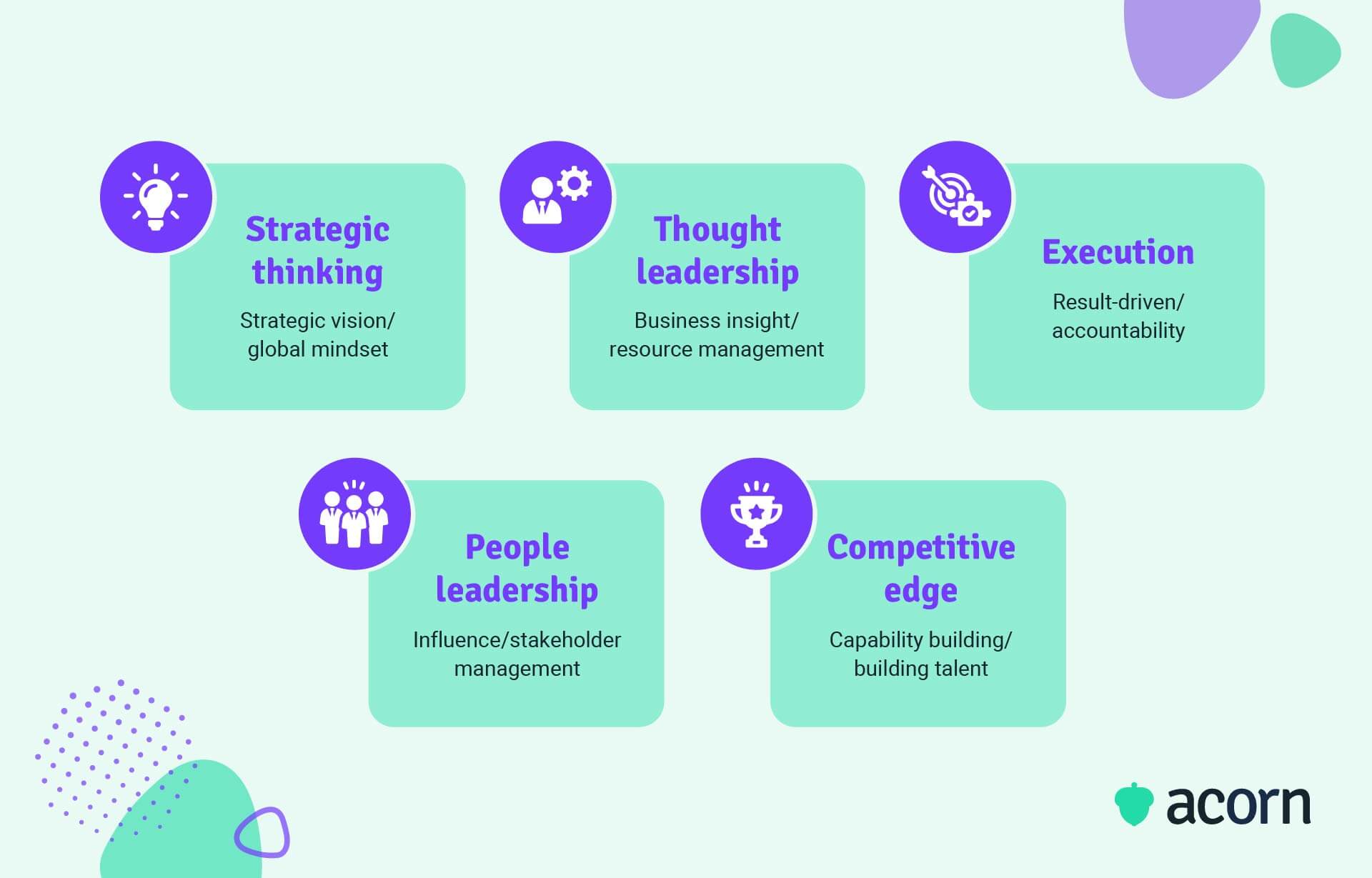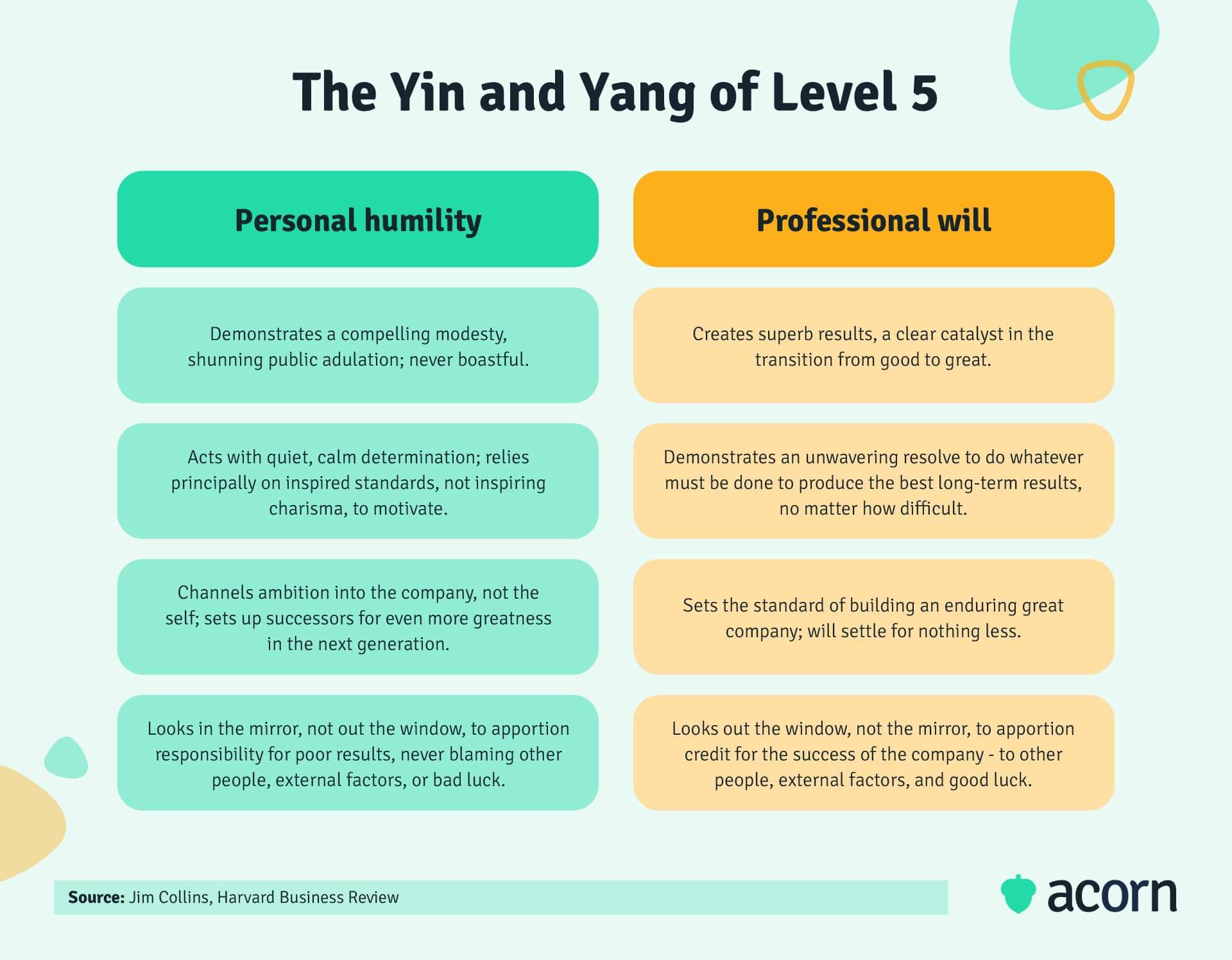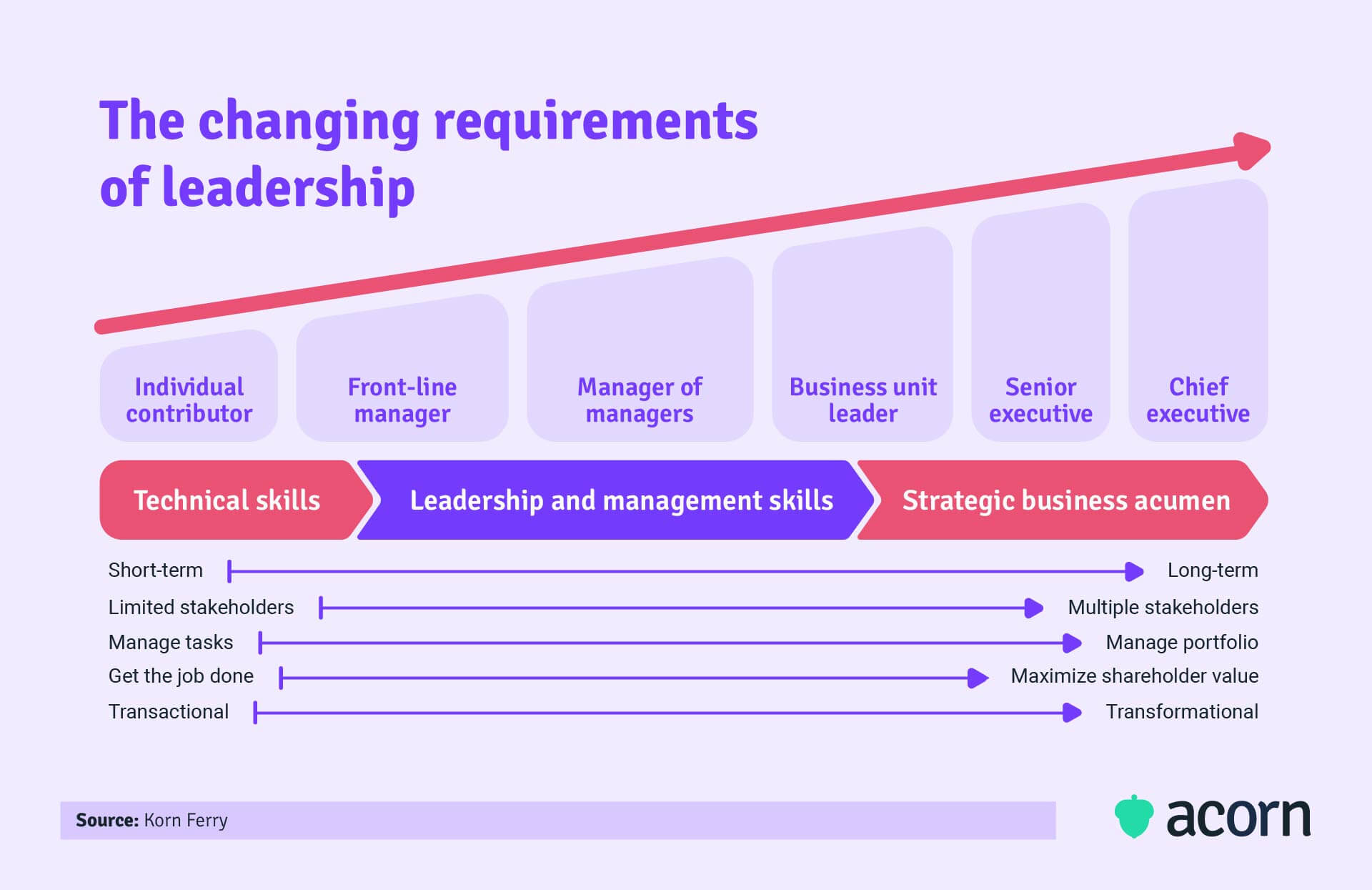The 5 Core Capabilities You Need in a Truly Impactful Leadership Capability Model
Reading Time: 8 minutes

Contents
Lead the pack with the latest in strategic L&D every month— straight to your inbox.
SubscribeLeadership is often touted as the key business driver, yet we see many organisations fail to even plan for it. Enter: The leadership capability model.
Why should you plan for and develop leaders? No employee will come to you fully formed as an ideal leader, let alone encapsulate all the capabilities your company needs to succeed. Most leadership skills and traits can be developed, though, with a little guidance.
In this article, we discuss leadership in all its forms, some universal leadership capabilities and how to effectively implement a capability model.
Why assess both leadership capability and potential?
Leadership capability refers to the knowledge and skills a person can learn to do in a leadership role, while leadership potential covers those innate qualities that reflect who a person is. Assessing both helps organisations understand the skills gaps that need to be bridged to develop individual contributors into leaders, as well as how fast emerging leaders will be able to upskill.

Deloitte’s leadership capability model pegs influence as a learned leadership capability. It can easily evolve over time to meet the changing needs of a person’s audience, particularly as the complexities of their role increases.
People potential (like social flexibility and emotional intelligence) refers to a personal trait that is usually developed early in life, making them harder to learn. If a person has “slow potential” when it comes to emotional intelligence, for example, they’re likely to be more detached compared to the empathic quality of “fast potential”. In layman’s terms, we’re talking how easily and/or quickly they can develop a trait.
It’s crucial to look at both because one gives an indication of past and current performance and skillsets, while the other shows the personal factors that enable someone to grow. Consider how an employee who has learned how to influence their peers has a good foundation for leadership. Yet, if they are often unaccommodating when those same peers are struggling with their work, they might not have the personal quality needed to become a manager. See the dilemma?
The cost of poor leadership
Before we go into what you need in leaders, let’s talk about exactly why you need them. Poor or lacking leadership tangibly impacts:
- Turnover by up to 32% (people don’t leave bad jobs, they leave bad managers)
- Revenue margins by 7% per annum
- Market value by up to 25%.
On the culture side, lacking leadership means vision isn’t effectively turned into direction for employees. The disconnect between working on the ground and goal setting higher up can foster resentment and affect morale. As leaders set the bar for employees (your future leaders), any undesirable behaviours or attributes will multiply, and you can kiss fruitful succession planning goodbye. Ergo, you can’t afford leaders who don’t drive the workforce you need to achieve business results.
This can also bleed into any investments you make to develop leaders. If your learning programs aren’t impactful, whether because of content or the learning management system (LMS) used to deliver it, then there’s no way you can pretty the data up to show business impacts. Which could mean budget cuts or reduced social equity for L&D initiatives.
We created the performance learning management system (PLMS) to counteract this. It bases all leadership training on capabilities, guiding leaders step-by-step through the capabilities needed to succeed in their role or an emerging one. Content is mapped to capabilities so learning opportunities are relevant, timely, and contextual, and learning outcomes are directly aligned with business outcomes.
5 key leadership capabilities
There are many ways you could define leadership capabilities. If we refer back to Deloitte’s model, each is derived from complex leadership challenges.

Starting with more detail isn’t necessarily better, though. You’ll find that many examples out there utilise different language for the same meaning when it comes to five crucial leadership capabilities. Lean, concise leadership frameworks—with say, five high-level capabilities—are scalable to different levels of management while retaining a core set expected of leadership.
When writing definitions for each capability, it also reduces the need for lengthy discussions on “what leadership means to us”. (Consensus is not absolutely necessary here; rather, you want to build a core model that can be contextualised or granularised at local levels. Plus, capabilities are meant to be as succinct as possible.)
By and large, most great leaders embody the same capabilities. The following five are both hard and soft skills that most people can learn and that support them in being successful in their work environment.

Strategic thinking
Clarity of vision, future direction and strategic intelligence are commonly sought-after capabilities in leaders. This is because the environment in which organisations exist is constantly changing (“the only constant is change”). Leaders should constantly be looking ahead while enabling their teams to create value now, contextualising outcomes to the strategy of their business function.
In practice
- Senior leaders look to and take advantage of future opportunities
- Clear links exist between day-to-day work and bigger picture of the organisation
- Workloads prioritised by key strategic drivers
- Environmental changes are expected, talked about and planned for
- Decisions are made by considering impacts on other departments and their strategies.
Thought leadership
Business know-how is critical at all levels of an organisation. Thought leaders, though, can drive conversation, influence others, lead change and shape perceptions where others can’t. That makes them pretty damn powerful when it comes to, say, getting buy-in on a company mission or new project.
It’s also important for conveying best practices and mission-critical knowledge. Leaders set the scene for knowledge sharing, meaning that how employees share information reflects the level of transparency your leaders demonstrate.
In practice
- Initiates change through reviews of systems, processes and behaviours
- Clearly articulates research for and benefits of change
- Demonstrates willingness to explore creative solutions
- Maintains awareness of current innovations and trends
- Cultivates own professional knowledge, efficiency and effectiveness.
Execution
Execution is a capability based on leading for the organisation. You have a reputation and marketing standing to maintain. Leaders ensure engagement with company outcomes through result-based high performance.
They’re the ones who know what decisions (in terms of work, strategy and talent management) are going to positively impact the bottom line. By aligning jobs and strategy, they are better able to address specific elements of an organisation’s strategy.
Say a tech company is launching a new product, but the marketing team’s current roles don’t have the capabilities to lead a product launch. The CMO would choose to either hire a Product Marketer or encourage upskilling for the ideal internal candidate based on current resources.
In practice
- Measures value creation by business impact, not just financial performance
- Manages resources, particularly budget, based on strategic alignment
- Defines performance expectations and provides necessary support and resources
- Takes responsibility for personal decisions and maintains composure in difficult situations.
Develop people & culture
It’s an inherent leadership quality to be able to empathise with, influence and manage the needs of multiple people outside of oneself—making people leadership the most behavioural capability of all.
For example, organising training and development is a facet of people management. But role modelling professional development for employees shows leadership through self-awareness. Inspiring peers through a passion for work and a belief in the company mission demonstrates the human benefit for other employees. While effective leadership involves a level of humility, it is based on professional will and putting the purpose of the organisation before personal ambition. (And those who feel drive for their companies usually pick similar successors.)

In practice
- Situational communication taking into account backgrounds, perspectives, moods and personal characteristics
- Exemplify accountability, transparency, integrity, resilience, and honesty
- Democratic delegation of tasks, recognising strengths, passions and workloads
- Seeking feedback from team members as much as giving it
- Champions company values to drive an empowering culture
- Encourages and support personal and professional development.
Competitive advantage
We’ve seen impact, talent building, and capability development used in the same vein. McKinsey calls it capturing return on leadership. Building capability and talent fits in here, because above all else, capability drives business and people drive capability. A lack of talent can force the wrong people into critical roles at any time, let alone precisely the wrong time. It also points to a lack of assessment, both of your internal and external environments.
In practice
- Suggest and/or arrange leadership development pathways by aligning business priorities and individual needs
- Teams are learning-centred and built with a diverse range of perspectives
- Champion innovation and improved ways of working.
Assessing leadership capability and potential
Without a reliable gauge of leadership potential, much of your organisation’s long-term success is left to chance. That’s not to mention how a lack of clarity can lead to uncertainty amongst your key business drivers.
A leadership capability framework is the most helpful tool for assessment here, not least of all because it is:
- Blind to selection bias
- Stable and reliable
- Highly contextualised
- Benchmarked
- Written in a common language.
So, how does one effectively gauge leadership potential and assess leadership capability?
Define your pathways
Succession planning should be part of all organisations. Considering things like lateral career moves, the trajectory for leadership doesn’t always need to be straight up the totem pole. But there should be structures in place for employees to progress and for HR to track candidates’ potential.
Consider the management tiers you have now in contrast with your leadership capabilities. What a front-line manager is required to do will be less taxing than expectations for senior executives. Formal training and development is somewhat easier this way, as you can map role responsibilities to relevant content.

You could also hone in on capabilities from the get-go. This is how Jim Collins determines what he calls Level 5 Leadership, his descriptor for truly great leaders. Leadership is measured by execution of capabilities and degree of organisational success. Framing your pathways around competency can be supported by hands-on and behavioural methods of learning and development, like mentoring, job shadowing and coaching.

Choose your methodologies
In other words, how are you assessing potential? There are pros and cons to all, so weigh them up.
- 360 feedback sources perspectives from managers, peers and subordinates, providing a holistic view of an individual’s performance. Anonymous surveys can be used here.
- Self-assessments encourage reflection but can be biased as most people have blind spots or may want to downplay weaknesses if they believe career progression is at risk.
- Training progress from within an LMS gives insight into the development of any hard skills or technical capabilities.
- Performance reviews and one-on-ones focus on results and value creation.
- Stretch assignments are useful for developing dynamic capabilities.
- Some organisations even utilise personality tests to understand leadership styles (and to structure cohesive and balanced teams).
Key takeaways
Part and parcel of leadership is human nature. This can be hard to account for in stable, business-focused capabilities, but it’s important when assessing potential. You especially want to be looking at employee relationships: With their direct reports, with their peers, with their managers.
Leadership potential is best nurtured with a leadership capability model. Defining the core capabilities needed in your key roles helps shape the learning opportunities for developing leaders, as well as creating a common language for assessing their performance.